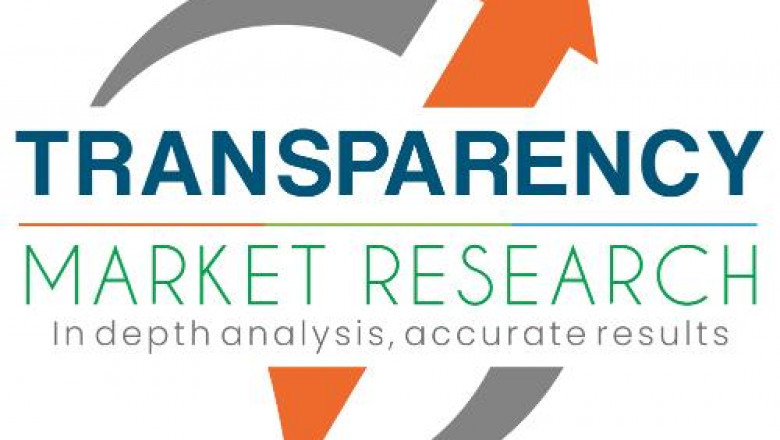views
The global hydrogen internal combustion engine (ICE) market was valued at US$ 18.2 Bn in 2023, and is projected to grow at a robust CAGR of 9.9% between 2024 and 2034, reaching approximately US$ 51.3 Bn by the end of the forecast period. This growth is primarily driven by increasing demand for clean transportation alternatives, particularly in the heavy-duty vehicle segment.
Surge in Hydrogen-Powered Trucks Fueling Market Value
Hydrogen-powered trucks and buses are quickly gaining traction as viable zero-emission alternatives to diesel-powered vehicles. These engines burn hydrogen to power internal combustion vehicles while releasing little to no greenhouse gases. OEMs (original equipment manufacturers) are capitalizing on this technology to meet tightening emission regulations and rising environmental expectations.
For example, MAN Truck & Bus announced the launch of its MAN hTGX hydrogen-powered truck, scheduled for 2025, with initial production targeting Germany and select international markets. Similarly, Cummins Inc. began production of its latest hydrogen ICE in Jamshedpur, India, with the new B6.7H engine set to power trucks from Tata Motors.
Clean Energy Transition Accelerates Hydrogen ICE Adoption
Rising concerns over climate change and fossil fuel dependency are shifting focus toward sustainable energy sources. Hydrogen is at the center of this movement, offering a carbon-free fuel option that can integrate seamlessly with existing engine architectures.
Governments across regions are actively supporting hydrogen infrastructure through massive investments. In Europe, the European Commission has pledged over €720 Mn toward seven renewable hydrogen projects. Meanwhile, the U.S. Department of Energy is investing US$ 7 Bn in hydrogen hubs across the country. These initiatives are directly bolstering demand for hydrogen ICEs by ensuring supply chains and infrastructure can scale in parallel with vehicle rollouts.
Key Technologies Enabling Hydrogen ICE Growth
Hydrogen ICE manufacturers are integrating next-gen technologies to optimize performance, efficiency, and durability. Notable innovations include:
· High-pressure in-cylinder direct injection
· Dual-channel turbocharging systems
· Advanced combustion control software
These advancements allow hydrogen engines to achieve higher thermal efficiency and combustion stability—critical factors for adoption in commercial vehicles that require performance on par with diesel counterparts.
Regional Analysis: Asia Pacific Takes the Lead
Asia Pacific emerged as the dominant regional market in 2023. Nations such as India, China, and Japan are making strategic investments in hydrogen-based mobility.
India’s National Green Hydrogen Mission, launched in 2023, aims to build large-scale electrolyzer manufacturing and hydrogen production infrastructure. In China, state-backed innovations continue to push boundaries. China Aerospace and Technology Corporation unveiled a liquid hydrogen system capable of powering trucks for up to 1,300 km without refueling—highlighting the region's leadership in hydrogen ICE R&D.
Europe, too, is expanding its footprint. The European Hydrogen Bank launched an auction in 2023 with €800 Mn in funding, further fueling regional interest and adoption.
Industry Landscape and Competitive Insights
The hydrogen ICE space is witnessing active participation from both legacy engine manufacturers and emerging players. Key companies include:
· TOYOTA MOTOR CORPORATION – Released a hydrogen-powered Hilux prototype
· Cummins Inc. – Developed new hydrogen engines for Tata Motors
· Mazda, Rolls-Royce, DEUTZ AG, and Bosch – Engaged in hydrogen ICE development for automotive and industrial applications
· INNIO Group and AVL – Innovating combustion technologies and integration solutions
Each of these players is contributing to a rapidly evolving landscape where clean combustion is becoming an increasingly feasible reality.
Market Segmentation: Applications and Power Categories
Hydrogen ICEs are gaining momentum across several key applications:
· Automotive – Especially heavy-duty trucks and buses
· Power Generation – For remote or mobile energy solutions
· Others – Including construction, marine, and off-highway use cases
In terms of power output, hydrogen ICEs are segmented into:
· Below 100kW – Typically for smaller commercial vehicles
· 100kW to 300kW – Most suited for medium-duty trucks and buses
· Above 300kW – For large-scale, heavy-duty applications
This segmentation ensures a wide range of end-users can find hydrogen ICE solutions that match their operational needs.
Challenges and Outlook
Despite the promise, several hurdles remain. The low volumetric density of hydrogen necessitates larger fuel tanks or advanced storage systems. Furthermore, regulatory inconsistencies across regions present barriers to uniform technology adoption.
However, Europe and Asia are making strides in creating favorable policy environments, which could serve as blueprints for other regions. If infrastructure and regulation keep pace with innovation, hydrogen ICEs could become a cornerstone in the decarbonization of heavy transport.
Conclusion
As the global community advances toward a net-zero emissions future, hydrogen internal combustion engines are poised to play a critical role. Backed by policy support, technological advancement, and commercial validation, the market is on track to nearly triple in value by 2034.
For OEMs, investors, and clean energy advocates, now is the time to take a closer look at hydrogen ICEs—not just as a transitional solution, but as a long-term strategy in clean transportation.






















Comments
0 comment